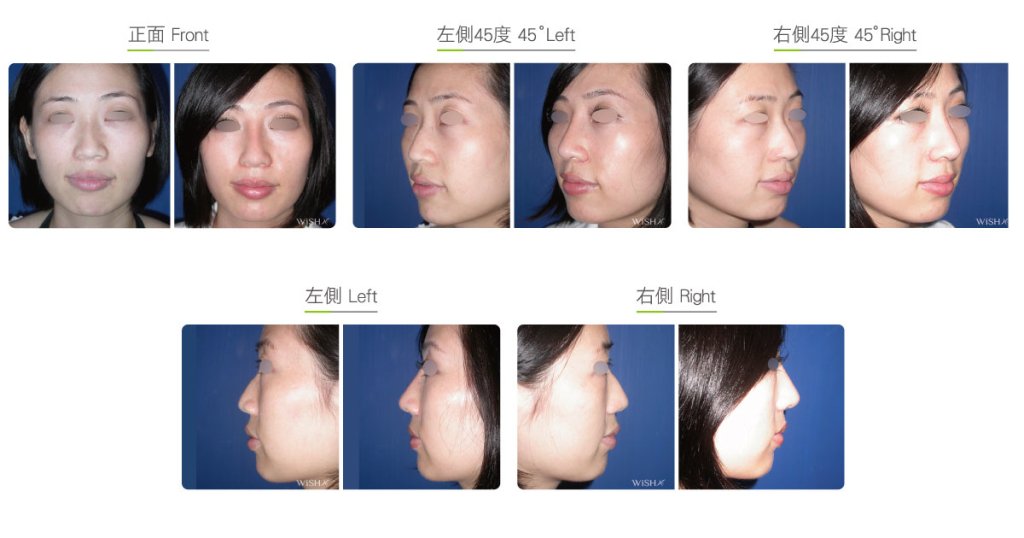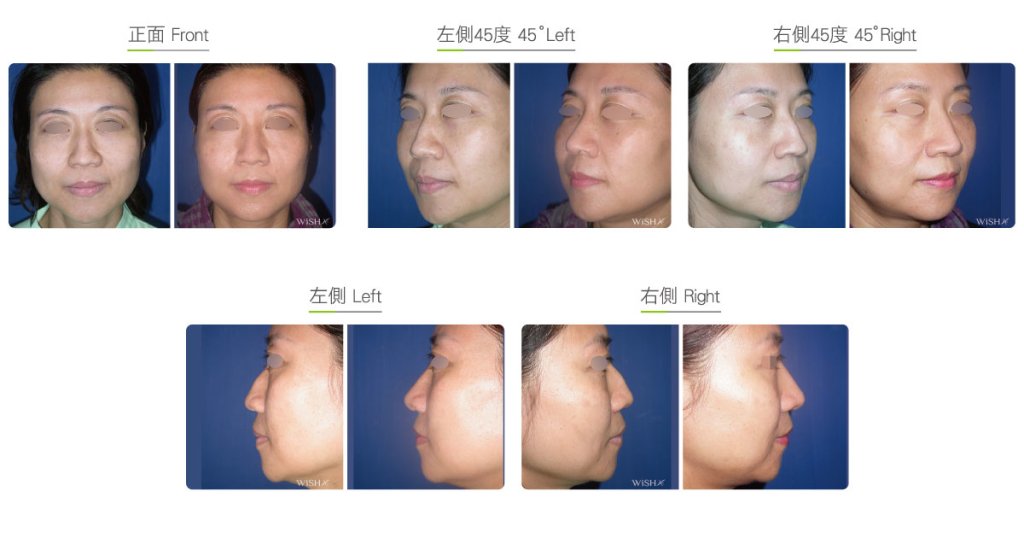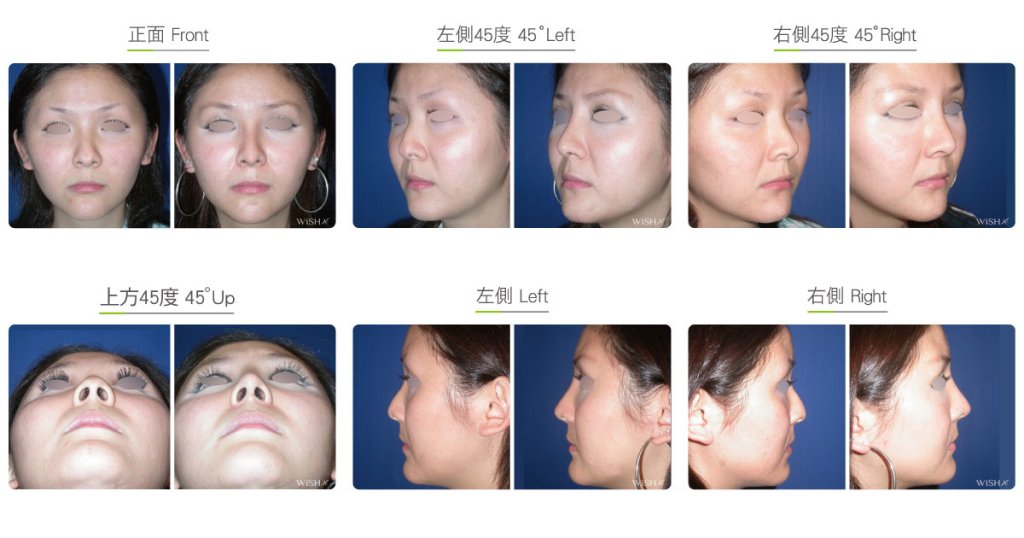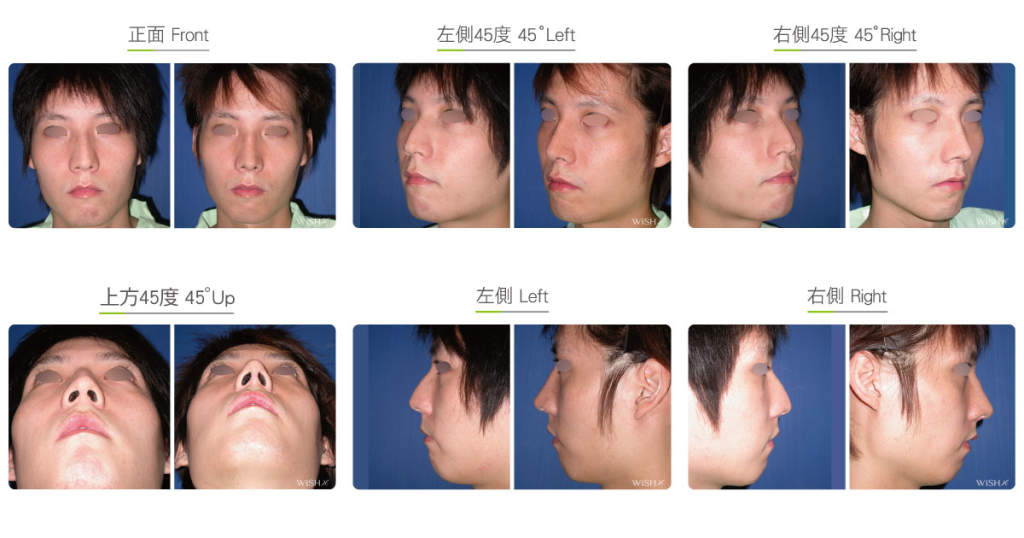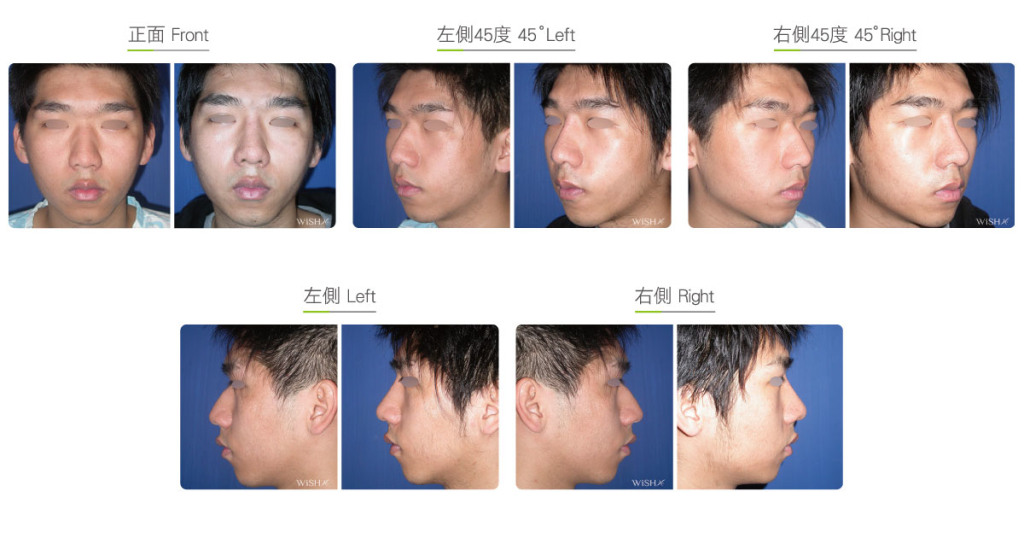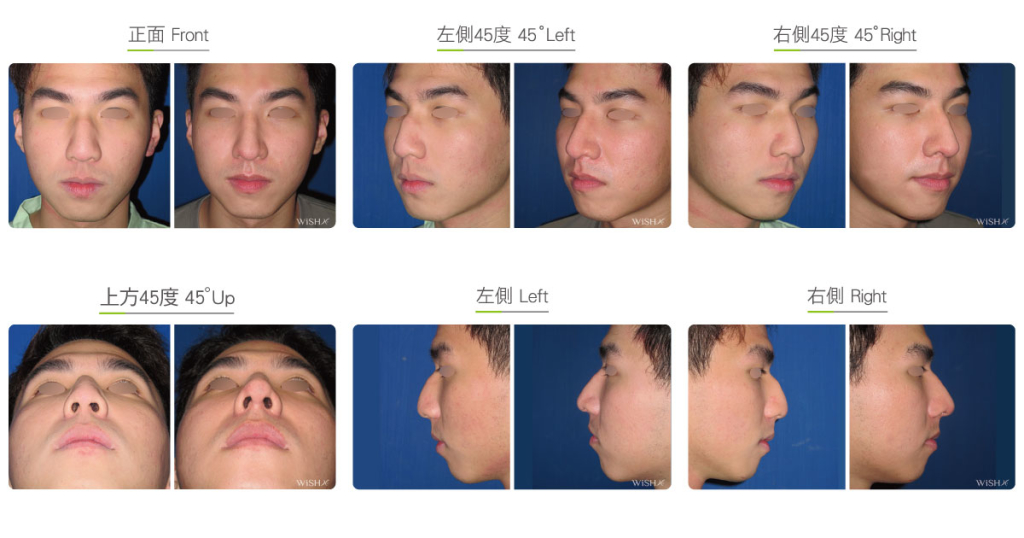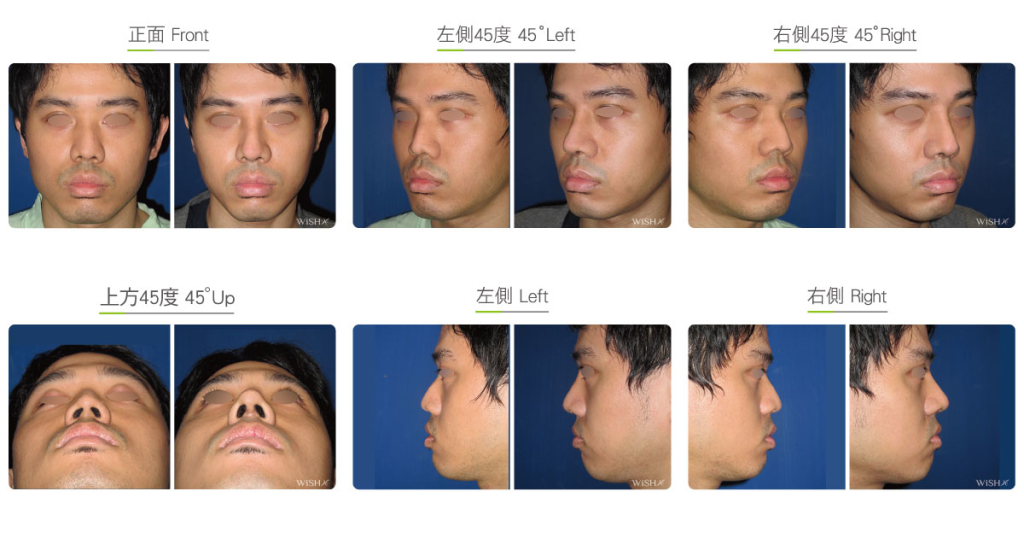Humpy Nose Correction
A hump nose is also called a dorsal hump or condyle and is characterized by a prominent mass at the upper one-third of the nasal bridge. It is shaped like a hump and thus its name. It is primarily caused by an incomplete or excessive connection between the bone and septal cartilage during the development of the nasal bridge and is hereditary in a majority of patients. Moreover, some patients have simultaneous nasal septal warping or nasal bone deviation. In WiSH clinic, hump nose correction is commonly integrated in Korean-style (open) rhinoplasty. Regarding the simple hump prominence, Dr. Chuang employs shaving osteotomy or aggressively corrective lateral osteotomy to pare down the protruding nasal bone or partially resect the cartilage based on the severity of the hump and emplace an nasal implant on the bridge to cover the shaved bone, which makes the nasal bridge present a smooth line and makes it less likely to feel the bone defects. For some patients unwilling to undergo augmentation rhinoplasty, single hump reduction is performed, which generally requires a small intranasal incision and manipulates a particular osteotome to pare down the prominent condyle and achieve the correction.
Surgical conditions
Duration
- Type of anesthesia: IV sedation + local anesthesia or general anesthesia
- Surgical incision: At the bottom of the nasal columella and inside the bilateral nostrils or unilateral nostril
- Recovery: 2–3 days
- Removal of stitches: 7 days
General instructions
Fast from food and water on the day of operation
- Wear a tape or plaster splint for 1 week postoperatively to stabilize the nasal bridge.
- Avoid smoking and alcohol and impacts or compressions to the nasal tip for 3 months postoperatively, and clean the intranasal wound in the morning and evening every day.
- Abstain from eating raw food, seafood, and irritating food or spices for 3 months postoperatively.
- Avoid exposure of the nostrils to dirty water (sea water, swimming pool or sauna water, and hot springs) and close contact with pets and dust mites for 3 months postoperatively.
Ideal candidates
- Patients with congenital prominence at the upper nasal bridge like a hump
- Those with acquired nasal bridge hyperplasia due to trauma or unknown causes
Potential complications
- Bone regeneration
- Nasal bridge depression
- Incomplete correction
- Uneven skin surface
Surgical advantages
-
The surgery pares down the hump by bone correction, the results of which are lasting and stable.
-
It avoids the instability or deviation of the emplaced prosthesis due to prominent humps.
-
It is able to prevent stimulation and hyperplasia of the hump.
Surgical drawbacks
-
Bone regeneration may still occur.
-
Excess correction may lead to nasal bridge collapse.
-
If there is no prosthesis to cover the nasal bridge, the site of osteotomy may be uneven.

